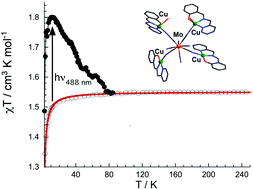New photomagnetic cyanido-bridged CuII–MoIV oligonuclear complexes: slight modification of the blocking ligands induces different structures†
Abstract
A pentanuclear complex, [Mo(CN)8{CuL1}2{CuL1(H2O)}2]·6H2O 1, and a decanuclear one, [Mo(CN)8{CuL2}3{CuL2(H2O)}]2·10H2O 2, have been obtained following the building-block approach (HL1 and HL2 are tridentate


 Please wait while we load your content...
Please wait while we load your content...